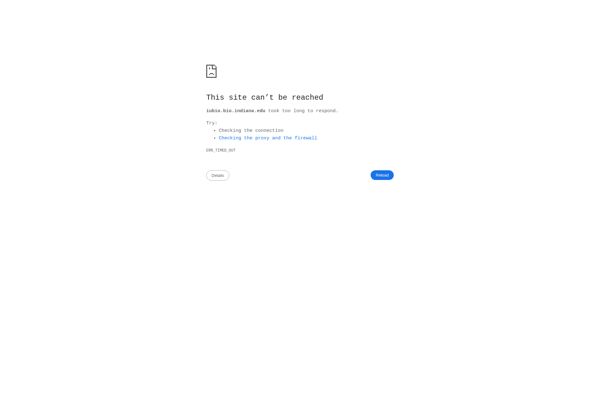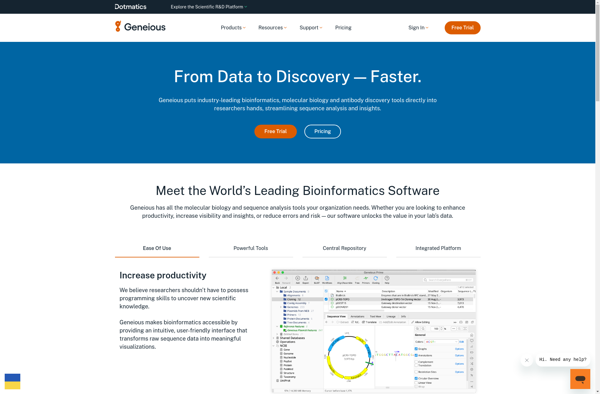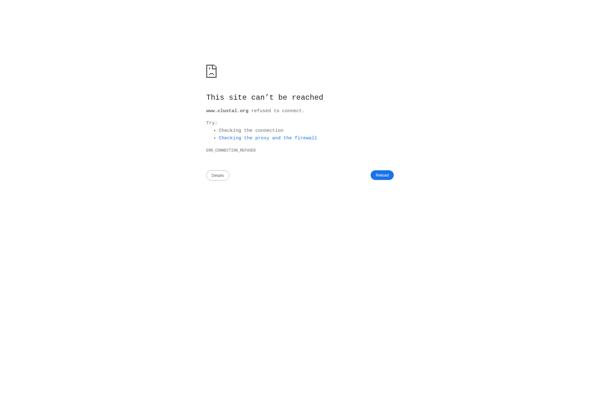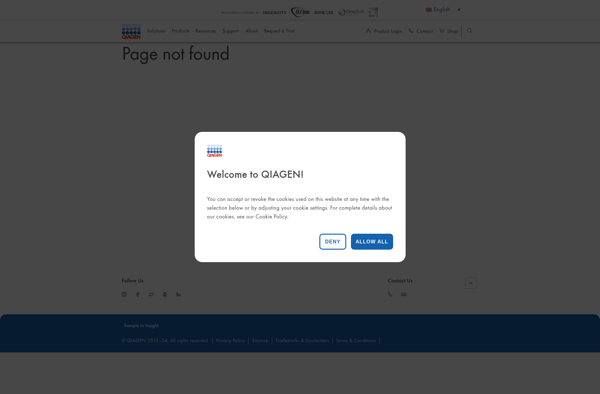GeneDoc

GeneDoc: Free Genomic Sequence Editor and Annotator
A free tool for editing and annotating genomic sequences, allowing users to view, edit, and annotate DNA or protein sequences up to 10Mb in length with features like six-frame translation, ORF finding, pattern searching, restriction map drawing, and sequence alignment.
What is GeneDoc?
GeneDoc is a graphical tool designed for manipulating and editing genomic sequences. It enables users to efficiently view, edit, and annotate DNA or protein sequences up to 10Mb in length. Some of the key features of GeneDoc include:
- Six-frame translation - Automatically translate DNA sequences in all six reading frames
- ORF finding - Identify open reading frames and potential genes
- Pattern searching - Search for sequence patterns like motifs or repeats
- Restriction map drawing - Graphically map enzyme cut sites
- Sequence alignment - Align two or more sequences with MUSCLE or other tools
- Sequence editing - Easily insert, delete, replace, reverse complement or append fragments
- Annotations - Annotate genes, regulatory elements, variations and more
- Export graphics and sequences - Export publication quality sequence maps and alignments
With an intuitive graphical interface and extensive analysis capabilities, GeneDoc simplifies genomic sequence manipulation and accelerates molecular biology workflow. The software runs natively on Windows and Linux systems. GeneDoc is offered free of charge by the Kapatral Lab at the University of Georgia.
GeneDoc Features
Features
- View, edit and annotate DNA or protein sequences
- Support sequences up to 10Mb in length
- Six-frame translation
- ORF finding
- Pattern searching
- Restriction map drawing
- Sequence alignment
Pricing
- Free
- Open Source
Pros
Cons
Reviews & Ratings
Login to ReviewThe Best GeneDoc Alternatives
Top Science & Education and Bioinformatics and other similar apps like GeneDoc
Here are some alternatives to GeneDoc:
Suggest an alternative ❐Geneious

Vector NTI

Clustal X

CLC Main Workbench
